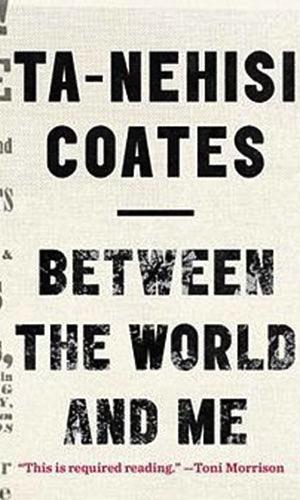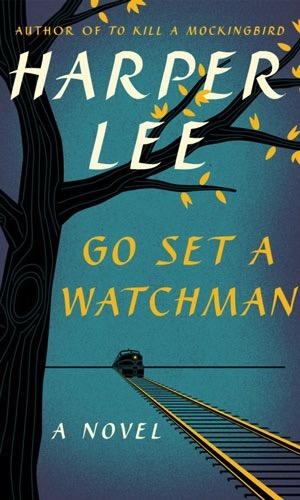Two of the most important books on race released in 2015, the exhumed novel, Go Set A Watchman, Harper Lee’s sequel to the award-winning classic, To Kill a Mockingbird, and journalist Ta-Nehisi Coates’ long-form letter to his teenage son, Between the World and Me, were published the same day. This fortuitous historical footnote is all the more remarkable given that neither book was originally slated for release that day.
Both books speak forcefully and poignantly on race in the United States, although from very different perspectives and starting points. Their journey as well as their content reveals something about our evolving understanding of racial equality and racial justice in the final years of the Obama era.
Coates’ book confronts, if not exposes to many readers, the realities of race in 21st-century America. This includes both moments of daily peril (such as driving while black or a tense moment in a movie theater) and the larger structures of oppression embedded in American society. Coates interrogates the delusions of “White America” and the “dreamers” who, turning the conceit of the American Dream on its head, pursue a life that too often excludes people of color. Coates offers not only a sharp historical analysis, but also an overwhelming array of insights and experiences that fix the mind on contemporary events with resonating force.Composed partly as a memoir, the book is less an argument than a gestalt, which, through the lens of a journalist in full command of his abilities, changes the way that the reader views the world. It is little wonder that Coates and his book were showered with honors. Between the World and Me was not only selected as the National Book Award winner for non-fiction, but Coates was awarded a MacArthur genius grant as well.
Just as the themes, issues, and vivid experiences conveyed in Between the World and Me explain its earlier release, the contents of Go Set A Watchman also offer insight as to why it was not published in the intervening decades. The novel, also laced with autobiographical elements, was structured around a development so shocking that it not only changes the way we regard one of our greatest literary heroes, but fundamentally challenges our understanding of racial progress and racial justice more broadly.
The novel begins when Jean Louis Finch (aka Scout), now a young woman in her mid-20s living in New York, returns home to Maycomb, Ala. for a vacation with her family, including her father, the legendary but ailing Atticus Finch. She arrives in the wake of the Supreme Court’s Brown v. Board of Education decision, and a simmering debate in her hometown that triggers a series of events and confrontations between herself and family members.
Having grown up idolizing her family, Jean Louis’s distress mounts from the unmasked and latent racism she discovers in her hometown and her family. Her disillusionment serves as the impetus for personal growth and a deeper understanding of race in America to parallel Coates’ searing vision.
A poetic and enchanting read, the novel’s power emanates, in no small part, from the central place in American hearts and minds that Atticus Finch occupies. Ranked by the American Film Institute as the greatest film hero in American history, Atticus Finch is no less heroic in the novel the film was based on. His courage in representing an unjustly accused Black man in a criminal trial and in fending off an angry lynch mob forms a collective memory for millions of Americans of all ages.
The principle most associated with Atticus Finch is that of individual empathy and interpersonal fairness. In perhaps the most memorable line in the book, Atticus counsels his daughter on empathy, telling her that, “you never really know a man until you stand in his shoes and walk around in them.” Yet a deeper understanding of structural racism illustrates the limits of promoting interpersonal equality.
In Go Set a Watchman, Atticus Finch’s personal prejudices are center stage. Atticus expresses not only opposition to the Supreme Court’s Brown v. Board of Education decision, but also privately-held beliefs about the backwardness of his fellow black citizens. To be sure, Atticus Finch’s characterization and public behavior in Go Set A Watchman is no different to that in To Kill A Mockingbird, a model Southern gentleman. Although he is an ardent defender of equal justice under the law in terms of basic civil rights and the right to a fair trial, he nonetheless opposes the Supreme Court’s integration mandate in the Brown decision, viewing it as unprincipled judicial overreach.
In retrospect, we must note that nothing in To Kill A Mockingbird suggested that Atticus Finch would have opposed segregation, and this is a point that Malcolm Gladwell reminds us in an insightful article for the New Yorker a few years ago on the limits of Southern white liberalism. In fact, Gladwell argued that Atticus Finch, like most moderate white Southerners, although disdainful of the kind of racism found in a Klan rally, would not have been integrationists, citing Gov. James Folsom as a historical example.
Just as Coates’ book release date was moved up because of its relevance to contemporary events, I found Go Set A Watchman’s arrival similarly fitting. For a society that has long viewed racism as an interpersonal event, the structural dimensions have dramatically lurched into broader public view in the last few years. Segregation, both historical and contemporary, illustrates a deeper structural dimension to racial inequality that cannot be resolved simply by treating people well or fairly. Ending racial prejudice or even fighting for a fair trial does not solve structural racism, and it is this fact that Go Set A Watchman illuminates to an audience that has long regarded Atticus Finch as a paragon of moral and civic virtue.Finch’s fall may partly explain why the novel remained unpublished for so long. This fall from grace, however, is necessary — albeit painful — for our collective growth. Confronting and reconciling our understanding of him serves to challenge the American understanding of racism as merely an interpersonal event, as if solving racism was as simple as changing hearts and minds. Without 50 years of the celebrated Atticus that we knew in To Kill a Mockingbird, this lesson would not be nearly as poignant.
Literature has long played a critical role in advancing social justice by generating empathetic perspectives, in helping us see the world through someone else’s eyes (even as Pecola Breedlove wishes hers were blue) and by revealing injustices we may have been blind toward. These two books arrive from different contexts and historical origins, yet they converge at the same point, educating the readers and the public in ways that are remarkably consistent, if different in the particulars.
Published on the same day of the same year, yet expanding across the generations from the past of pre-Brown Alabama to the future of Coates’ son’s young adulthood, these books not only challenge and linger with any reader who picks them up, but change the way that millions of Americans think about race.
The ideas expressed on the Haas Institute blog are not necessarily those of UC Berkeley or the Division of Equity & Inclusion, where the Haas Institute website is hosted. They are not official and not of one mind. Thoughts here are those of individual authors. We are committed to academic freedom, free speech and civil liberties.






